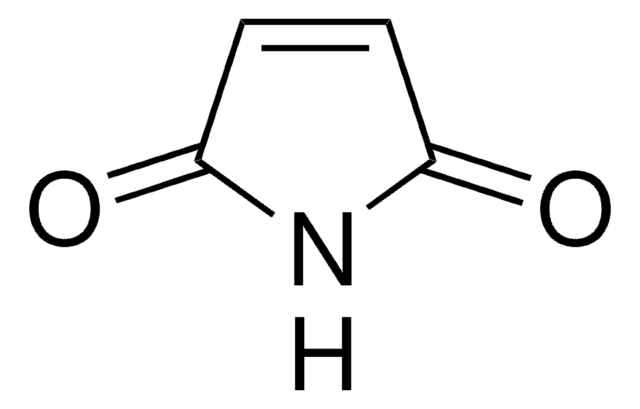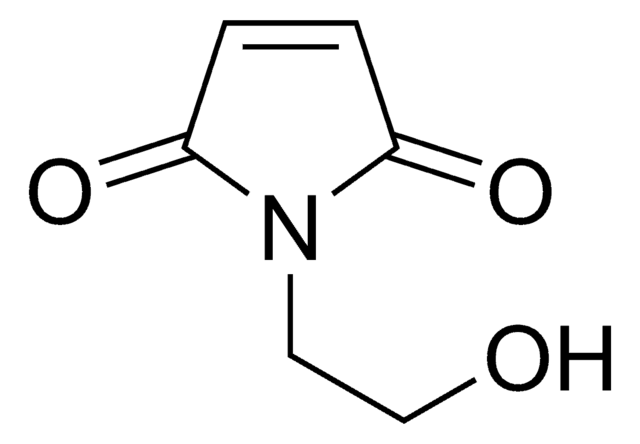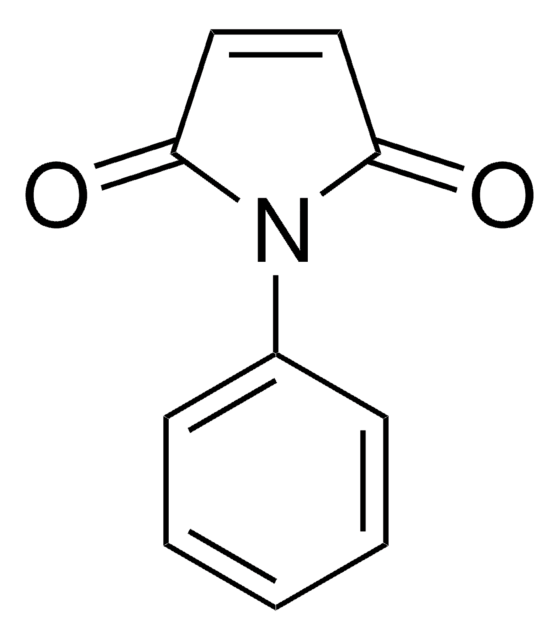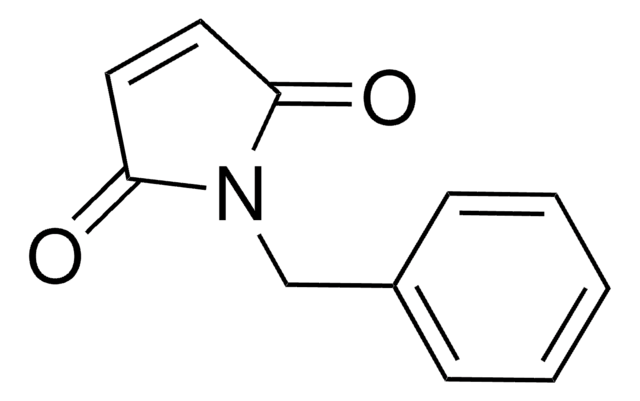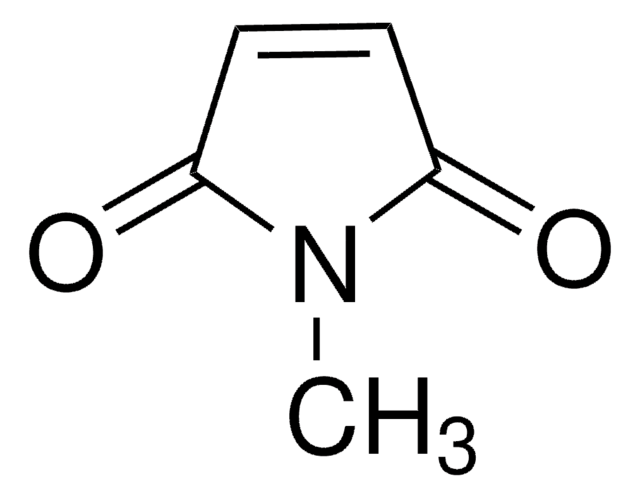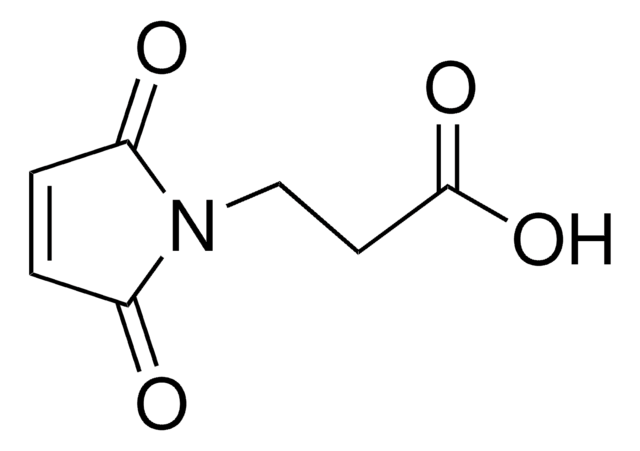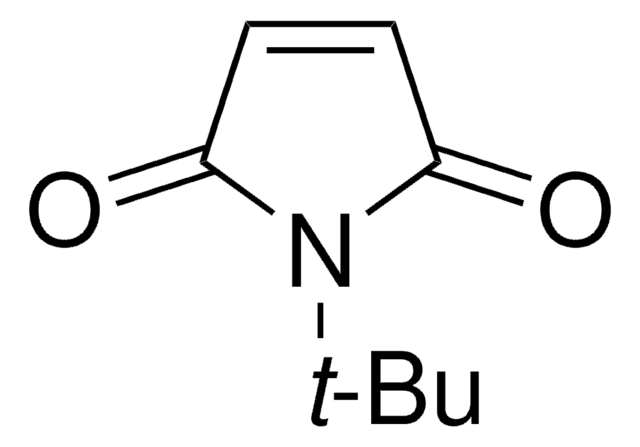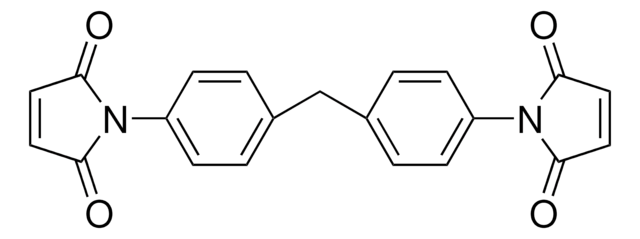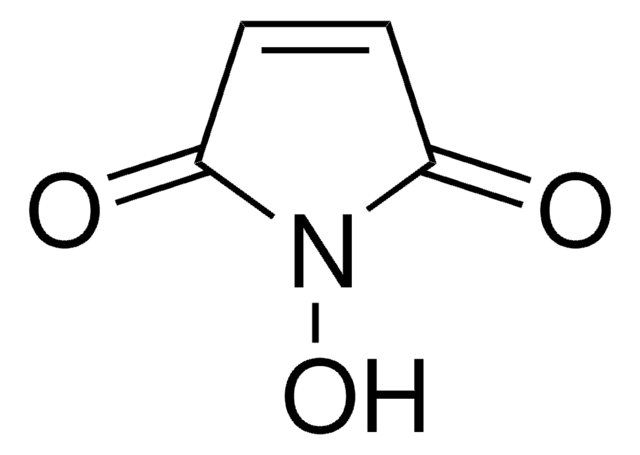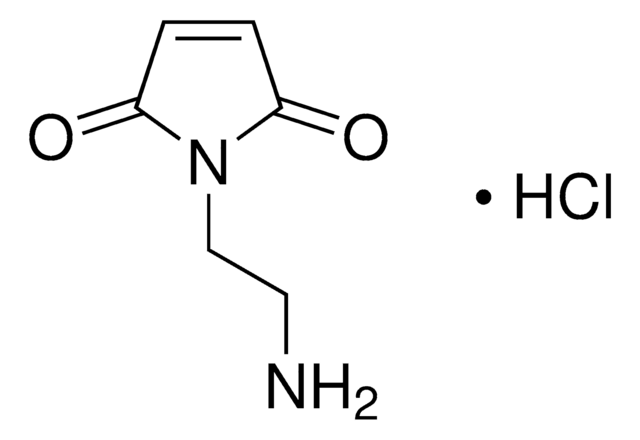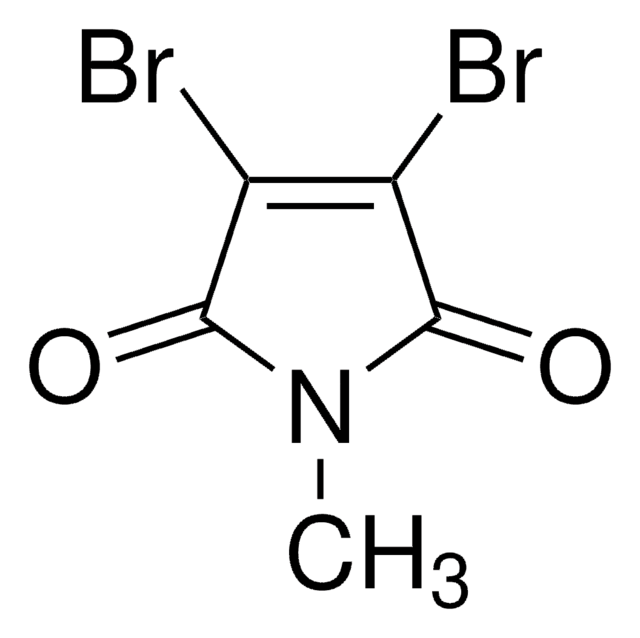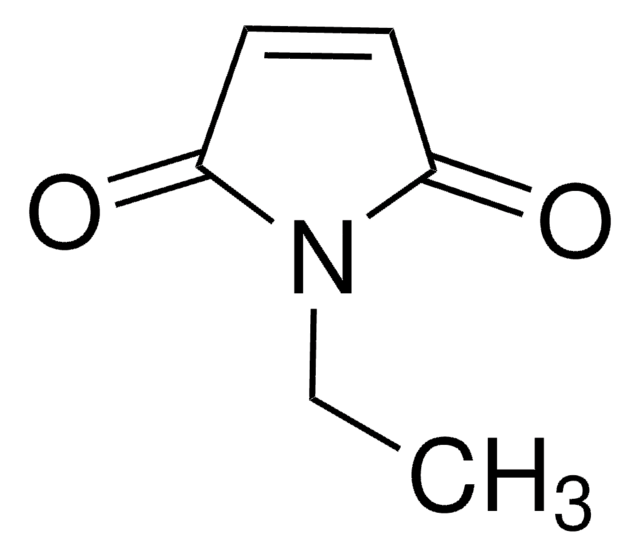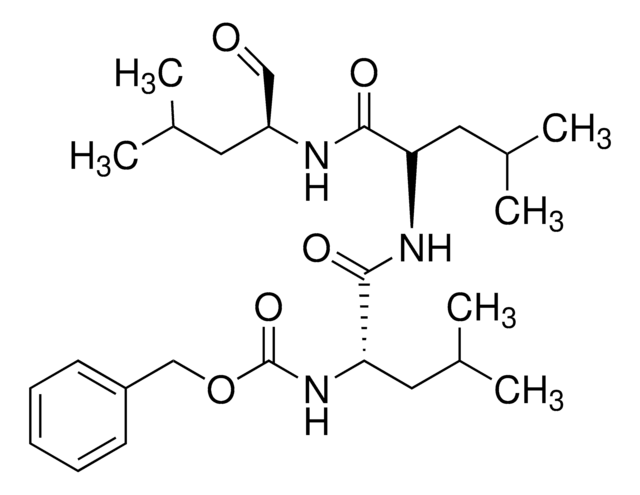All Photos(2)
About This Item
Empirical Formula (Hill Notation):
C10H13NO2
CAS Number:
Molecular Weight:
179.22
EC Number:
MDL number:
UNSPSC Code:
12352100
PubChem Substance ID:
NACRES:
NA.22
Recommended Products
Quality Level
Assay
97%
mp
89-91 °C (lit.)
functional group
imide
maleimide
SMILES string
O=C1C=CC(=O)N1C2CCCCC2
InChI
1S/C10H13NO2/c12-9-6-7-10(13)11(9)8-4-2-1-3-5-8/h6-8H,1-5H2
InChI key
BQTPKSBXMONSJI-UHFFFAOYSA-N
General description
N-Cyclohexylmaleimide (CHMI, NCMI) is a cyclic imide. Diels-Alder reactions of 9-hydroxymethylanthracene with CHMI catalyzed by hydrophobic nanospace confined within the self-assembled Pd6 open cage bearing triimidazole walls have been reported. It undergoes Diels-Alder reactions with various aromatic hydrocarbons promoted by self-assembled coordination cage. This cage acts as nanometer-sized molecular flask and hence promotes this reaction. CHMI is reported to undergo radical polymerization readily under various polymerization conditions to afford poly(CHMI), having excellent thermal stability.
Application
N-Cyclohexylmaleimide (CHMI, NCMI) may be used for the preparation of hyperbranched copolymers of p-(chloromethyl)styrene (CMS) and NCMI, via atom transfer radical copolymerization reaction.
N-Cyclohexylmaleimide contaminated with N-cyclohexylmaleamic acid (less than 0.9 wt%) may be used for the heat-resistant poly(methyl methacrylate) resin free from coloration and for methyl methacrylate homopolymer. It may be used as monomer in the preparation of styrene/N-cyclohexylmaleimide copolymers with small polydispersities and controlled molecular weights, via free radical copolymerization. It may be used in the synthesis of hyperbranched copolymers by the atom transfer radical copolymerization with p-(chloromethyl)styrene catalyzed by CuCl/2,2′-bipyridine in cyclohexanone or anisole.
Signal Word
Danger
Hazard Statements
Precautionary Statements
Hazard Classifications
Acute Tox. 3 Oral - Aquatic Acute 1 - Aquatic Chronic 3 - Eye Irrit. 2 - Skin Irrit. 2 - Skin Sens. 1A - STOT SE 3
Target Organs
Respiratory system
Storage Class Code
6.1C - Combustible acute toxic Cat.3 / toxic compounds or compounds which causing chronic effects
WGK
WGK 3
Flash Point(F)
Not applicable
Flash Point(C)
Not applicable
Personal Protective Equipment
dust mask type N95 (US), Eyeshields, Gloves
Choose from one of the most recent versions:
Already Own This Product?
Find documentation for the products that you have recently purchased in the Document Library.
Customers Also Viewed
Shinnosuke Horiuchi et al.
Chemistry, an Asian journal, 6(7), 1839-1847 (2011-02-22)
A self-assembled coordination cage serves as a nanometer-sized molecular flask to promote the Diels-Alder reactions of aromatic hydrocarbons with N-cyclohexylmaleimide. The coordination cage accelerated the Diels-Alder reaction of anthracene at the electronically unfavorable, terminal benzene ring to give a compact
Increase in thermal stability of vinyl polymers through radical copolymerization with N-cyclohexylmaleimide.
Otsu T, et al.
Polymer International, 25(3), 179-184 (1991)
Living free radical donor-acceptor copolymerization of styrene and N-cyclohexylmaleimide and the synthesis of poly [styrene-co-(N-cyclohexylmaleimide)]/polystyrene block copolymers.
Schmidt-Naake G and Butz S.
Macromolecular Rapid Communications, 17(9), 661-665 (1996)
Bingchuan Wei et al.
Journal of chromatography. A, 1526, 104-111 (2017-10-29)
Reversed-phase liquid chromatography (RPLC) has been commonly used in IgG2 disulfide isoforms analysis. Recently, the columns packed with large pore superficially porous particles (SPP) have become available commercially. This work explores the application of this SPP technology in IgG2 disulfide
Hyperbranched copolymers of p-(chloromethyl) styrene and N-cyclohexylmaleimide synthesized by atom transfer radical polymerization.
Jiang X, et al.
Journal of Applied Polymer Science, 78(11), 1992-1997 (2000)
Our team of scientists has experience in all areas of research including Life Science, Material Science, Chemical Synthesis, Chromatography, Analytical and many others.
Contact Technical Service